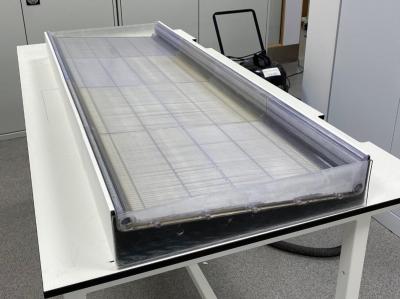Researchers led by Professor Tony McNally, from WMG, at the University of Warwick, in partnership with Senergy Innovations, have launched the first nanomaterial enabled all polymer solar thermal cell. This achievement was supported by funding from BEIS (Department for Business, Energy & Industrial Strategy).

The thermal properties of the polymers that were used were modified to enable heat from sunlight to be transferred with high efficiency to heat water in a low cost and sustainable way. The modular design of the cells reportedly allows for the rapid construction of a solar thermal cell array on both domestic and industry roofing.
Dr. Greg Gibbons and his team at WMG have also produced the first prototype of the solar thermal cell fully manufactured by 3D printing. This activity has been crucial in guiding the design and critical aspects of the manufacture of the solar thermal cells.
Professor Tony McNally, Director of the International Institute for Nanocomposite Manufacturing (IINM), at WMG, University of Warwick comments: It is really pleasing to see several years of research activity and the understanding gained being translated in to a real world application. Our fundamental work on the thermal conductivity of 1D and 2D materials, including graphene, and composites of these materials with polymers could revolutionize the supply of affordable, clean and sustainable energy.
Christine Boyle, CEO, Senergy Innovations Ltd. adds: Switching to advanced polymer materials meant a more efficient manufacturing process and more flexible product design. This resulted in the breakthrough of the low cost, low carbon, lightweight smart Senergy panels. Our job now is to ensure that Senergy solar panels become a key part of the smarter built environment and make renewable heating and cooling systems affordable and accessible for everyone.